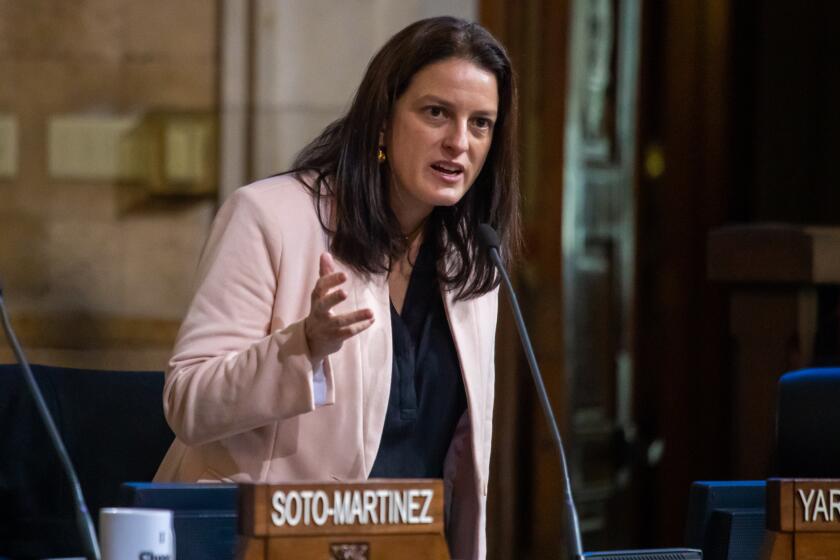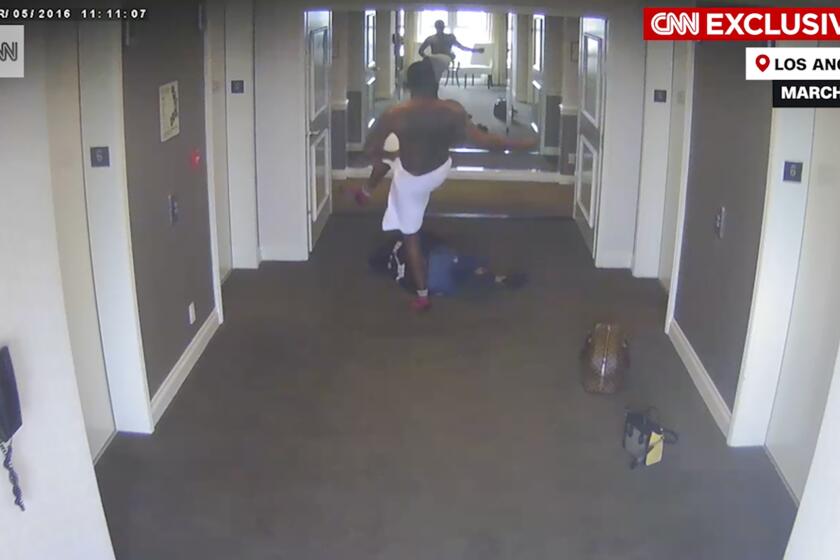Streamlining of Condo Conversion Process Sought
- Share via
Santa Monica officials are investigating ways to streamline the method for converting rent-controlled apartments to condominiums, a process that Mayor Christine E. Reed has likened to an endless journey through a dark tunnel.
The city’s innovative condominium conversion law enables landlords to sell rental units when a majority of their tenants agree to buy. It was supposed to ease rent control tensions when it was approved by an overwhelming percentage of voters in June, 1984, but has been widely described as a disappointment.
Only one building has converted and Reed said several applicants have complained that the program is expensive, complex and time-consuming.
Complaints About City
“People have said that they can’t purchase their apartments because the city is dragging its feet,” Reed said. “This program had widespread voter support and I think we have an obligation to make it work efficiently.”
Paul DeSantis, the leader of a broad alliance of activists who created the plan, agreed that changes are needed. DeSantis said the city can make the program more efficient by enlarging its staff and solving a few administrative problems. He said officials should also reaffirm support for the program.
“Overall, the number of conversions has been a lot smaller than we expected,” said DeSantis, a tenant. “The city is not completely to blame. But there are a lot of things they can do to speed things up.”
Joan Akins, an assistant planner, said the city has received 33 conversion applications since 1984. Twelve of the projects are nearing completion. If all of the efforts succeed, about 300 of the city’s 33,000 apartment units would be converted to condominiums, according to Akins.
That is a far cry from the conversion stampede some officials anticipated when the program was unveiled. DeSantis said the framers of the plan, an unlikely alliance of apartment owners, tenants and politicians, hoped to open the door to condominium conversions without endangering the housing rights of tenants when they created the program.
Ambitious Plan
The result was an ambitious and unique plan with several built-in restrictions. Among them is a requirement that two-thirds of a building’s residents approve a conversion and half state their intention to purchase. The sale price of each unit must be negotiated by the tenant and landlord, and tenants can require a complete report on a building’s physical condition.
All non-buying tenants remain under rent control, and disabled and elderly renters are given lifetime leases with assured rent limits. In addition, the seller is required to pay a 6% tax that goes to finance housing for low-income and elderly people who apply for conversions under the program.
“This is a very complex process . . . even for an experienced real estate subdivider,” DeSantis said. “A lot of people start working on a conversion and find out there are a lot of things they didn’t know about.”
James Baker, an apartment owner who worked on the plan, said he expected conversions to proceed slowly because of the number of requirements that must be met. “The pace is about what I expected,” Baker said. “The apartment industry team thought it would proceed slowly from the start.”
Factors at Play
DeSantis said that the amount of time required for a conversion depends on several factors, including the size and location of a building. A four-unit complex could be converted in four to six months, he said, while a larger building could require about a year because more government agencies and tenants are involved. And a conversion near the ocean could take two additional months because state Coastal Commission approval is required.
Landlords who seek to convert their buildings pay the city anywhere from $1,700 to nearly $5,000 in fees, depending on the number of units and the amount of time involved. DeSantis said those costs, a sore point among landlords, could be cut if the conversion process moved faster. With that in mind, he made three proposals to cut the conversion process time by up to six months. Reed passed the proposals on to the city staff
Full-Time Help
DeSantis suggested that the council hire two full-time people to process application forms instead of using part-time workers from the planning staff. He said officials should review the conversion process step by step to determine how the applications could be shortened or changed. And he called on the city management to help coordinate the various agencies involved.
The timing is right for these changes, DeSantis said, because falling interest rates have made it possible for more people to make offers on their apartments. In addition, he said some tenants have already negotiated bargain deals. One Santa Monica apartment owner has agreed to sell his two-bedroom apartments for less than $60,000 each, about half of what they might fetch in an open market, DeSantis said. More recently, DeSantis said a landlord agreed to sell a one-bedroom apartment north of Wilshire Boulevard for $90,000.
“People seem to be very happy with the deals that have been made so far,” DeSantis said. “And now tenants are getting even better deals than they bargained for because of interest rates. So there’s a lot of pressure being put on the city by tenants who want to speed up the process so they can take advantage of interest rates before they go up again.”
“The interest is certainly there,” Reed added. “Now we just need to make the process move a little faster.”
More to Read
Sign up for Essential California
The most important California stories and recommendations in your inbox every morning.
You may occasionally receive promotional content from the Los Angeles Times.









